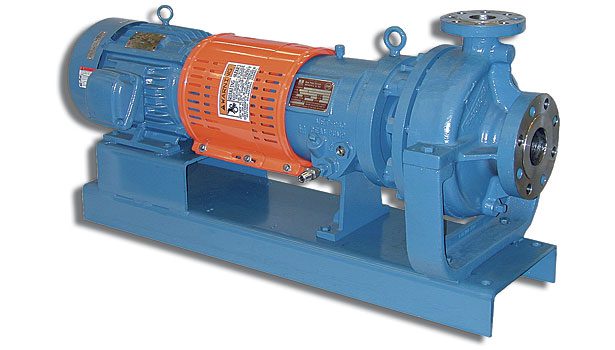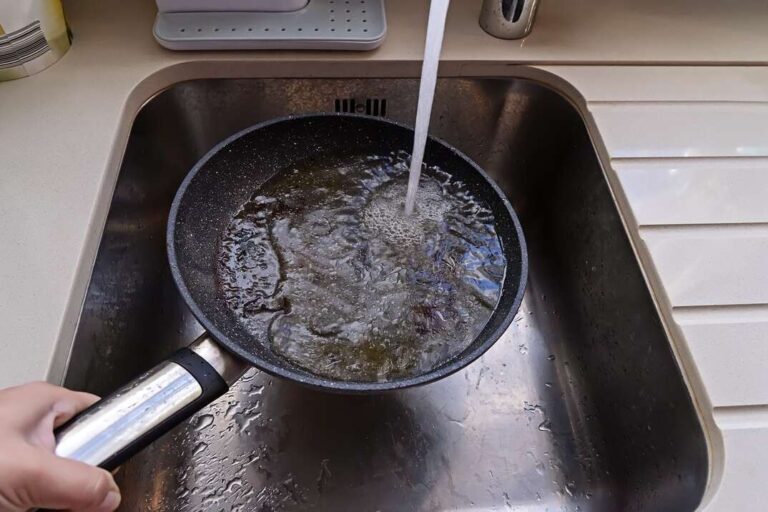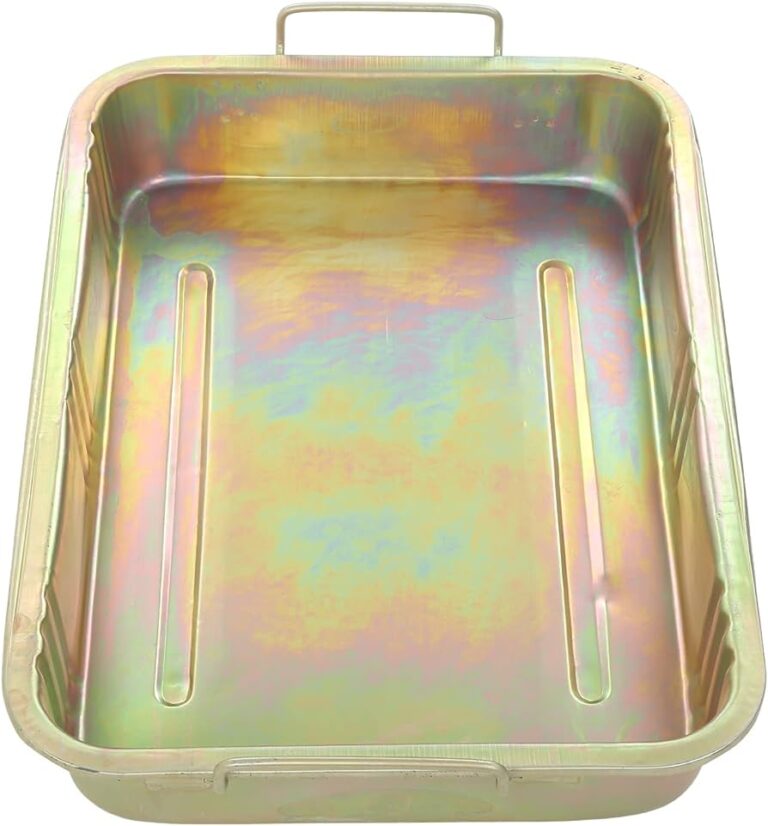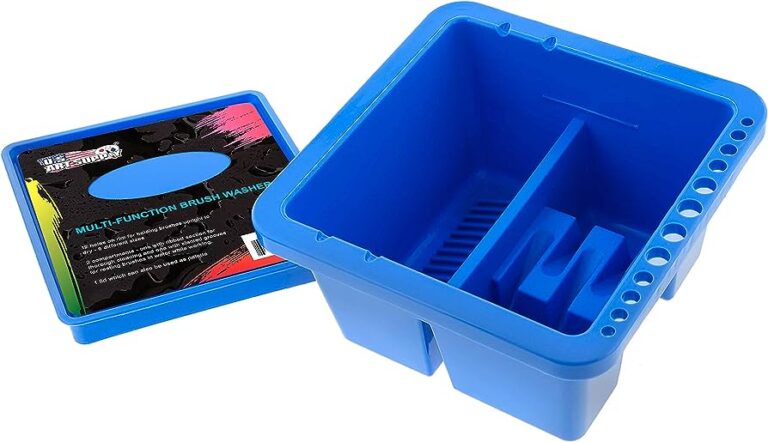Oil Pan Heater: Enhance Engine Performance With Heat Mastery
An oil pan heater can significantly enhance engine performance by providing controlled heating to the engine oil, resulting in better lubrication and reduced wear and tear on engine components. With heat mastery, this device ensures that the oil remains at optimal temperatures for efficient engine operation.
Engine performance is crucial for vehicle owners, as it directly impacts fuel efficiency, power output, and overall longevity. By installing an oil pan heater, drivers can ensure their engine operates smoothly, even in cold weather conditions, leading to improved performance and reliability.
So, let’s explore how an oil pan heater works and the benefits it offers in enhancing engine performance.
Why Use An Oil Pan Heater For Enhanced Engine Performance
Enhance your engine’s performance with the use of an oil pan heater. By providing heat mastery, this device ensures that your engine oil is at optimal temperature, reducing wear and tear, improving fuel efficiency, and increasing overall performance.
Using an oil pan heater is a smart choice for anyone looking to enhance their engine performance. This specialized heating device offers several benefits and works efficiently to improve engine functionality. Let’s explore the benefits of using an oil pan heater and how it works to understand its impact on engine performance.
Benefits Of Using An Oil Pan Heater:
- Quick and effortless engine start: An oil pan heater warms the engine oil before starting the vehicle. This preheating process ensures that the oil is at an optimal temperature, reducing the strain on the engine during startup. As a result, the engine starts smoothly and effortlessly, even in cold conditions.
- Improved fuel efficiency: Cold engine oil tends to be thick and viscous, which makes it difficult for the engine to circulate the oil properly. By using an oil pan heater, the oil is heated to an ideal temperature, allowing it to flow smoothly through the engine components. Improved oil circulation leads to reduced friction and better fuel efficiency.
- Reduced wear and tear: Cold starts can put additional stress on engine components, leading to increased wear and tear over time. When you use an oil pan heater, the engine oil maintains its optimal temperature, ensuring that all moving parts are properly lubricated right from the start. This reduces the chances of friction-induced damage and prolongs the lifespan of the engine.
- Enhanced performance in extreme weather: Extreme temperatures can have a negative impact on engine performance. In cold weather, the oil becomes too thick, creating difficulties in lubricating the engine efficiently. On the other hand, in extremely hot weather, the oil thins out, reducing its ability to provide effective lubrication. By using an oil pan heater, you can maintain the oil at an optimal temperature regardless of the outside conditions, ensuring consistent engine performance.
How An Oil Pan Heater Works:
- Electrical heating element: An oil pan heater consists of an electrical heating element that is installed directly on the oil pan. When connected to a power source, the heating element warms up, transferring heat to the oil in the pan.
- Controlled temperature: Most oil pan heaters are equipped with a thermostat or timer that allows you to control the temperature and duration of the heating. This ensures that the oil reaches and maintains the desired temperature without overheating.
- Efficient heat distribution: The heating element of an oil pan heater is designed to evenly distribute heat across the oil pan, ensuring that all areas are warmed up. This promotes consistent oil temperature and eliminates any cold spots that could affect engine performance.
- Easy installation: Oil pan heaters are typically simple to install, either by attaching directly to the oil pan or by using adhesive patches. This makes them a convenient addition to any vehicle, with minimal modifications required.
By using an oil pan heater, you can optimize your engine’s performance by ensuring smooth starts, improving fuel efficiency, reducing wear and tear, and combating the effects of extreme temperatures. With its easy installation and controlled temperature features, an oil pan heater is a valuable tool to enhance your engine’s functionality and overall driving experience.
Advantages Of Using An Oil Pan Heater
Enhance your engine performance and maintain optimal heat mastery with an oil pan heater, providing numerous advantages for your vehicle. Say goodbye to cold starts and engine wear while ensuring better fuel efficiency and reduced emissions.
Ensures Proper Lubrication During Cold Starts:
- An oil pan heater plays a crucial role in ensuring proper lubrication during cold starts.
- When the engine is cold, the oil becomes thick and viscous, making it difficult to flow smoothly throughout the engine components.
- By using an oil pan heater, the oil is heated to an optimal temperature, allowing it to flow effortlessly through the engine, reaching all critical parts.
- This ensures that the engine is adequately lubricated right from the start, reducing friction and wear on important engine components.
- Proper lubrication during cold starts also helps in extending the engine’s lifespan and improving overall performance.
Reduces Engine Wear And Tear:
- One of the significant advantages of using an oil pan heater is that it helps in reducing engine wear and tear.
- Cold weather conditions can be harsh on an engine, causing the oil to thicken and become less effective in lubricating the moving parts.
- When the engine is started in such conditions, the lack of proper lubrication can lead to increased friction, resulting in accelerated wear and tear.
- By using an oil pan heater, the oil is heated to the optimal temperature, ensuring that it maintains its viscosity and can effectively lubricate the engine components.
- This reduces the amount of friction and wear, prolonging the life of the engine and minimizing the need for costly repairs.
Prevents Damage From Cold Weather Conditions:
- Cold weather conditions can be detrimental to the engine’s performance and longevity.
- Extreme cold temperatures can cause the oil to thicken excessively, hindering its flow and preventing it from reaching all the necessary parts of the engine.
- This lack of proper lubrication can lead to damage such as increased friction, premature wear, and even engine seizure.
- An oil pan heater effectively prevents such damage by heating the oil to the optimal temperature, ensuring it remains fluid and continuously circulates throughout the engine.
- By maintaining proper lubrication, the oil pan heater safeguards the engine from the harmful effects of cold weather, allowing it to perform reliably even in freezing conditions.
So, if you want to enhance your engine’s performance and protect it from the harsh effects of cold weather, consider investing in an oil pan heater. It ensures proper lubrication during cold starts, reduces engine wear and tear, and prevents damage caused by extreme cold temperatures.
By incorporating this valuable tool into your engine maintenance routine, you can prolong the life of your engine and experience improved performance all year round.
Choosing The Right Oil Pan Heater
Enhance engine performance with heat mastery by choosing the right oil pan heater. Improve your vehicle’s reliability and optimize oil viscosity for smooth operation in colder climates.
Factors To Consider When Selecting An Oil Pan Heater
- Compatibility: Before purchasing an oil pan heater, it is crucial to ensure that it is compatible with your specific vehicle make and model. Different vehicles may have varying oil pan designs, so check for compatibility to avoid any installation issues.
- Heating Capacity: Consider the heating capacity of the oil pan heater. This is especially important if you live in colder climates where extreme temperatures can affect the engine’s performance. Look for a heater that provides sufficient heat output to maintain optimum oil temperature regardless of the weather conditions.
- Quality and Durability: Invest in an oil pan heater that is built to last. Look for heaters made from high-quality materials that can withstand the rigors of everyday use. A durable oil pan heater will ensure that your engine is consistently warmed up and protected.
- Ease of Installation: Choosing an oil pan heater with a straightforward installation process can save you time, money, and frustration. Look for a heater that comes with clear installation instructions and requires minimal tools or modifications to your vehicle.
- Energy Efficiency: Consider the energy efficiency of the oil pan heater. Opt for a model that is designed to minimize power consumption while providing efficient heating. This not only reduces your carbon footprint but also helps save on energy costs in the long run.
- Safety Features: Ensure that the oil pan heater you choose has built-in safety features to prevent any accidents or damage. Look for features like overheat protection and automatic shutoff to provide peace of mind while using the heater.
- Customer Reviews: Before making a final decision, it is helpful to read customer reviews and ratings for different oil pan heaters. This will give you insights into other users’ experiences with specific models and help you make an informed choice.
Different Types And Sizes Available In The Market
- Magnetic Oil Pan Heater: These heaters attach to the oil pan using strong magnets and are relatively easy to install. They are available in various sizes to fit different oil pan designs. Magnetic oil pan heaters are ideal for occasional use in moderate cold climates.
- Drain Plug Oil Pan Heater: This type of heater replaces the existing oil drain plug and utilizes the vehicle’s oil circulation system to warm up the oil. They come in different thread sizes to fit most vehicles and provide efficient heating throughout the engine.
- Stick-On Oil Pan Heater: These heaters feature an adhesive pad that is directly applied to the oil pan’s surface. They are available in different sizes and can be trimmed to fit the specific dimensions of your oil pan. Stick-on oil pan heaters provide consistent heating and are suitable for colder climates.
- Custom-Fitted Oil Pan Heater: In some cases, custom-fitted oil pan heaters may be available for specific vehicle makes and models. These heaters provide optimal heating coverage for the engine and are designed to fit perfectly without any modifications.
Understanding Power Requirements And Installation Process
- Power Requirements: Before purchasing an oil pan heater, it is essential to check its power requirements and ensure that your vehicle’s electrical system can handle it. Consider factors such as voltage, wattage, and current draw to avoid any electrical issues during installation.
- Installation Process: Installing an oil pan heater typically involves draining the oil, removing the oil pan, and attaching the heater according to the manufacturer’s instructions. It is crucial to follow the installation process carefully to ensure proper functioning and avoid any leaks or damages to the engine.
- Tools and Accessories: Depending on the type of oil pan heater, you may need specific tools and accessories for installation. These can include wrenches, socket sets, thread sealant, and electrical connectors. It is advisable to gather all the necessary tools beforehand to complete the installation smoothly.
- Professional Installation: If you are not confident in installing the oil pan heater yourself, it is always a good idea to seek professional installation. An experienced mechanic can ensure that the heater is installed correctly, minimizing the risk of any installation errors.
Remember, choosing the right oil pan heater is crucial for enhancing engine performance and protecting your vehicle in cold weather conditions. Consider factors such as compatibility, heating capacity, quality, and ease of installation to make an informed decision. Ensure that you understand the power requirements and follow the installation process carefully for optimal results.
Installing An Oil Pan Heater
Enhance engine performance with the installation of an oil pan heater, optimizing heat mastery for improved functioning.
Enhance Engine Performance With Heat Mastery
Installing an oil pan heater is a simple yet effective way to ensure optimal engine performance, especially during cold winter months. By keeping your oil at the ideal temperature, an oil pan heater helps to prevent engine damage resulting from cold starts and promotes fuel efficiency.
In this section, we will provide a step-by-step guide on how to install an oil pan heater, list the necessary tools and equipment, and highlight essential safety precautions to keep in mind during installation. So, let’s dive in and explore the process of installing an oil pan heater.
Step-By-Step Guide On How To Install An Oil Pan Heater:
Here is a straightforward step-by-step guide that will walk you through the process of installing an oil pan heater:
- Begin by parking your vehicle on a flat surface and ensuring the engine is completely cooled down.
- Locate the oil pan on the underside of your vehicle. It is usually situated towards the front of the engine and is easily recognizable as a rectangular-shaped metal component.
- Clean the oil pan’s surface thoroughly using a suitable degreaser, ensuring it is free from any debris or oil residue that may hinder the heater’s adhesive properties.
- Measure the dimensions of your oil pan to determine the appropriate size of the oil pan heater necessary for installation. This is crucial to ensure proper coverage and heat transfer.
- Peel off the protective backing of the adhesive side of the oil pan heater, then carefully attach it to the cleaned surface of the oil pan. Press firmly to ensure good adhesion.
- Once the oil pan heater is securely attached, route the power cord away from hot engine components and any moving parts. Make sure it is safely secured to prevent any potential damage or interference.
- Connect the power cord of the oil pan heater to an appropriate power source, following the manufacturer’s instructions. It is essential to choose a power source that can handle the required voltage and current.
- Double-check all connections and ensure that the oil pan heater is firmly in place. Make any necessary adjustments or repositioning before proceeding.
- Start the engine and allow the oil pan heater to warm up the oil for the recommended duration, as specified by the manufacturer. This time may vary depending on the model and conditions.
- Once the oil has reached the desired temperature, you’re all set! Enjoy the benefits of enhanced engine performance and improved fuel efficiency during those cold winter days.
Necessary Tools And Equipment For Installation:
To install an oil pan heater, you will require the following tools and equipment:
- Oil pan heater (appropriate size for your vehicle)
- Suitable degreaser
- Clean cloth or rag
- Measuring tape
- Power source compatible with the heater’s voltage and current requirements
Safety Precautions To Keep In Mind During Installation:
When installing an oil pan heater, it’s crucial to prioritize safety. Here are some essential precautions to consider:
- Ensure the engine is completely cooled down before beginning the installation process to avoid any potential burns.
- Disconnect any power sources or battery terminals before handling electrical connections or power cords.
- Route the power cord away from hot engine components, sharp edges, and moving parts to prevent any damage or hazards.
- Follow the manufacturer’s instructions and specifications for proper installation and power connections.
- Inspect the oil pan heater and power cord regularly for signs of wear or damage, and promptly address any issues to maintain functionality and safety.
Now that you have a clear step-by-step guide, know the necessary tools and equipment, and understand the safety precautions, you can confidently install an oil pan heater to enhance your engine’s performance. Stay ahead of the cold weather and ensure optimal oil temperature for improved fuel efficiency and engine longevity.
Maintaining The Oil Pan Heater
Upgrade your engine’s performance by properly maintaining the oil pan heater. Keep your engine warm with heat mastery for enhanced functionality and longevity.
Oil Pan Heater: Enhance Engine Performance With Heat Mastery
Are you looking to optimize your engine’s performance and keep it running smoothly, even during the coldest winter months? Look no further than the oil pan heater. This essential engine accessory helps maintain the optimal temperature of your engine’s oil, ensuring optimal lubrication and reducing wear and tear on vital components.
In this section, we will explore how to maintain the oil pan heater, troubleshoot common issues, and recognize signs of potential problems.
Regular Maintenance Tasks To Keep The Heater In Optimal Condition
To ensure that your oil pan heater continues to perform at its best, regular maintenance is crucial. Here are some essential tasks to keep in mind:
- Inspect the power cord and connections: Regularly check the power cord and connections for any signs of damage or wear. Look for frayed wires, loose connections, or exposed parts. If any issues are detected, it’s important to address them promptly to prevent malfunctions or hazards.
- Clean the heater surface: Over time, the heater surface may accumulate dust, dirt, or debris, reducing its efficiency. Regularly clean the surface of the oil pan heater using a soft cloth or brush. Be sure to follow the manufacturer’s instructions to avoid any damage to the heater.
- Check for leaks: Inspect the oil pan and heater for any signs of leakage. Leaks can significantly affect the performance of the heater and may indicate a more significant problem with the engine or oil system. If you notice any leaks, it is best to seek professional help to identify and address the underlying issue.
Common Troubleshooting Tips And Solutions
Despite regular maintenance, oil pan heaters might encounter occasional issues. Here are some common troubleshooting tips and solutions:
- Heater not turning on: If the oil pan heater fails to turn on, check the power source and ensure it is properly connected. Also, make sure that the thermostat is set correctly. If the issue persists, contact a professional for further assistance.
- Uneven heating: In some cases, the oil pan heater may provide uneven heating, leading to hotspots or cold areas. To address this issue, try repositioning the heater to ensure better heat distribution. If the problem persists, consider consulting a professional who can assess the situation and provide appropriate solutions.
Signs Of Potential Issues And When To Seek Professional Help
Certain signs indicate potential issues with the oil pan heater or the engine itself. If you notice any of the following, it may be time to seek professional help:
- Abnormal noises: Strange noises coming from the oil pan heater, such as clicking or buzzing sounds, could indicate a malfunction. These noises may be caused by loose parts or electrical problems. Contact a professional to diagnose and resolve the issue properly.
- Inconsistent temperature: If you observe inconsistent oil temperatures or noticeable fluctuations, it could be a sign of a malfunctioning oil pan heater or an underlying issue with the engine’s oil system. Seek professional assistance to identify and address the problem promptly.
- Oil leaks: Any signs of oil leaks around the oil pan heater or the engine require immediate attention. Leaks can compromise the efficiency of the heater and may indicate a more significant issue with the engine or oil system. Contact a professional to diagnose and fix the problem correctly.
Remember, regular maintenance, troubleshooting, and professional assistance when necessary are key to keeping your oil pan heater in optimal condition and ensuring the smooth operation of your engine. By following these guidelines, you can enhance engine performance and enjoy hassle-free driving, even in the most challenging weather conditions.
Enhancing Engine Performance With An Oil Pan Heater
Enhance your engine’s performance by utilizing an oil pan heater, a heat mastery tool that optimizes temperature for improved efficiency and longevity. Keep your engine running smoothly with this innovative solution.
Did you know that a simple device like an oil pan heater can greatly enhance the performance of your vehicle’s engine? By providing a consistent and optimal temperature for the oil in your engine, an oil pan heater offers a host of benefits that can improve your engine’s efficiency, longevity, and overall performance.
Let’s delve into some key advantages of using an oil pan heater.
Improved Fuel Efficiency And Reduced Emissions:
- Faster engine warm-up: An oil pan heater helps the engine reach its optimum operating temperature faster, reducing the time it takes for the engine oil to warm up. This, in turn, leads to better fuel combustion and improved fuel efficiency.
- Lower fuel consumption: When your engine is warm, it can operate more efficiently, resulting in reduced fuel consumption and lower emissions. An oil pan heater ensures that the engine oil remains at the right temperature, even in cold weather conditions, allowing for optimal fuel efficiency.
- Reduced cold start wear: Cold starts are known to cause increased fuel consumption and higher emissions. By preheating the engine oil, an oil pan heater minimizes wear and tear during cold starts, leading to improved fuel efficiency and reduced emissions.
Enhanced Engine Longevity And Performance:
- Reduced engine wear: Cold starts and operating in low temperatures can cause excessive engine wear. With an oil pan heater, the engine oil remains at the ideal temperature, providing better lubrication and reducing friction. This helps to prolong the life of engine components, resulting in enhanced engine longevity.
- Improved oil circulation: By preheating the engine oil, an oil pan heater ensures that the oil circulates more efficiently throughout the engine, reaching all vital components. Proper oil circulation leads to better lubrication, reduced wear, and overall improved engine performance.
- Minimized engine damage: Cold starts can lead to potential damage to the engine, such as increased piston and cylinder wear. An oil pan heater eliminates the risk of engine damage by maintaining the optimal oil temperature, allowing for smoother starts and reduced wear on critical engine parts.
Case Studies And Success Stories Of Engines Benefiting From Oil Pan Heaters:
- Several truck fleets have reported significant fuel savings and increased engine life after installing oil pan heaters. Some companies have reported as much as 30% reduction in fuel costs and notable decreases in engine repairs.
- Independent studies have shown that vehicles equipped with oil pan heaters experienced improved fuel efficiency by up to 15% in cold weather conditions, leading to reduced emissions and lower operating costs.
- Numerous individual vehicle owners have shared success stories of improved engine performance and longevity after installing oil pan heaters. These success stories highlight smoother starts, improved fuel economy, and minimized engine wear.
Incorporating an oil pan heater into your vehicle’s engine system is a smart investment that pays off in multiple ways. With improved fuel efficiency, reduced emissions, enhanced engine longevity, and performance, this simple device can have a profound impact on the overall performance and lifespan of your engine.
Experience the benefits of heat mastery with an oil pan heater and unlock the full potential of your vehicle.
Other Applications Of Oil Pan Heaters
Oil pan heaters have a wide range of applications beyond enhancing engine performance. They can also prevent oil thickening, reduce fuel consumption, decrease emissions, and provide easier cold starts for vehicles in colder climates. With heat mastery, these heaters offer efficient and reliable solutions for maintaining optimal oil temperatures.
Whether it’s enhancing engine performance, improving hydraulic systems, or tackling cold weather conditions, oil pan heaters have a range of applications beyond their primary function. Let’s explore the various uses of these innovative devices.
Commercial And Industrial Uses Beyond Enhancing Engine Performance:
- Construction equipment: By keeping the oil in construction vehicles warm, oil pan heaters prevent cold starts, reduce friction, and maximize efficiency.
- Generators: Oil pan heaters ensure that generators can start effortlessly even in freezing temperatures. They help maintain proper oil viscosity and minimize wear and tear on vital components.
- Fleet management: With oil pan heaters, fleet owners can extend equipment life, reduce fuel consumption, and decrease instances of machine failure, ultimately reducing maintenance costs.
Heating Benefits For Hydraulic Systems And Machinery:
- Heavy machinery: Oil pan heaters play a crucial role in maintaining optimal viscosity levels of hydraulic oils, preventing fluid thickening and ensuring smooth and efficient operation of heavy machinery.
- Industrial pumps: Oil pan heaters offer significant benefits to industrial pumps, as they help keep the oil warm, eliminate cold start issues, and improve overall pump performance.
- Agricultural equipment: By preventing oil from thickening, oil pan heaters protect agricultural machinery from damage and help achieve optimal productivity even in chilly conditions.
Cold Weather Applications In Various Industries:
- Oilfield operations: Oil pan heaters are a game-changer in the oil and gas industry. They enable equipment to start quickly in sub-zero temperatures, reducing downtime and boosting productivity.
- Mining operations: Mining equipment often operates in harsh and frigid environments. Oil pan heaters ensure smooth startups and minimize engine wear, enhancing the reliability of these crucial machines.
- Transportation: In cold weather, oil pan heaters help truck engines start smoothly, improve fuel efficiency, and guard against engine damage caused by excessive friction.
- Marine applications: Oil pan heaters are invaluable on boats and ships, preventing cold oil from impacting engine performance and improving reliability, especially during cold-weather sailing.
Oil pan heaters are versatile devices that find utility in numerous commercial, industrial, and cold weather applications beyond just enhancing engine performance. With their ability to maintain optimal temperatures for oils, they improve the reliability, efficiency, and lifespan of various machinery and equipment.

Credit: esab.com
Frequently Asked Questions On Oil Pan Heater: Enhance Engine Performance With Heat Mastery
What Are The Benefits Of An Oil Pan Heater?
Oil pan heaters provide several benefits, including quick engine warm-up, improved fuel efficiency, reduced wear on engine parts, and easy cold weather starting.
When Should I Plug My Oil Pan Heater On?
Plug your oil pan heater on when the temperature drops to ensure optimal engine performance and reduce wear and tear.
What Is The Difference Between A Block Heater And An Oil Pan Heater?
A block heater warms the engine coolant, while an oil pan heater heats the oil directly.
Do You Need A Block Heater If You Use Synthetic Oil?
No, synthetic oil does not eliminate the need for a block heater.
Conclusion
To sum up, an oil pan heater is a valuable tool for enhancing engine performance. By providing consistent heat to the engine oil, it ensures optimal lubrication and reduces the wear and tear on critical engine components. This promotes better fuel efficiency, smoother startups, and overall improved engine performance.
Installing an oil pan heater is a wise investment that can help prolong the lifespan of your vehicle’s engine and save you money in the long run. Whether you live in a cold climate or simply want to maximize your engine’s performance, a quality oil pan heater is a must-have accessory.
Don’t let cold temperatures hinder your engine’s performance, take advantage of the heat mastery that an oil pan heater provides. Give your engine the warmth it deserves and unlock its full potential.






